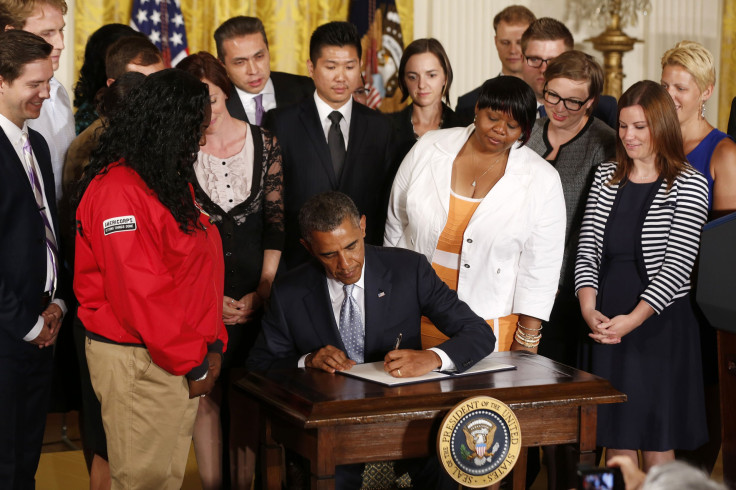America's Private Student Loan Debt Load Rising, Despite Risks, Costs That Exceed Government Loans

Of all the life-altering decisions that college students make -- who to be friends with, what to major in, when to cram for an exam -- choosing to sign up for a private student loan may be the one that sticks with them the longest.
Neither private nor federal student loans can be discharged through bankruptcy. Yet students who take out federal loans have access to loan forgiveness and flexible payment programs, including the kind President Obama expanded to more student borrowers this week.
Not so borrowers of private student loans, who hold $150 billion of the country’s $1.2 trillion in total student debt. Yet despite the disadvantages of taking out a private student loan, the volume of such loans is rising.
And it's a trend that alarms experts who warn that students who borrow in the private market risk carrying a more expensive kind of debt, one that advocates and policy experts eye with extreme wariness.
Private student loans “should always be a very, very last ditch option,” said Stephen Burd, senior policy analyst at the New America Foundation’s education policy program. “They typically are more costly, and have fewer protections than federal [student] loans.”
Besides missing out on benefits from Obama's new student loan policy, private student loan borrowers this week also lost a shot at refinancing their debt at lower interest rates, and converting their private loans into federal loans, when a bill supporting those measures was killed in the U.S. Senate. Those borrowers, “would have become eligible for income-based repayment if they refinanced into a federal student loan,” Maura Dundon, senior policy counsel at the Center for Responsible Lending, said. The center is one of more than two dozen organizations that supported the Bank on Students Emergency Loan Refinancing Act, sponsored by Sen. Elizabeth Warren, D-Mass. “There’s no way to do that right now.”
Private student lending has waxed and waned over the past decade. It ballooned during the lead-up to the credit crisis, mirroring the explosion in subprime mortgage lending during that period. Private student loans, by annual volume, shot up “from less than $5 billion in 2001 to over $20 billion in 2008,” the Consumer Financial Protection Bureau (CFPB) reported to Congress in 2012.
“Before the crash, a lot of those loans were flat-out subprime loans with really high interest rates, made to people who were never going to be able to pay them back,” Dundon said.
That’s because a lot of those loans were funded by asset-backed securities, with buyers of those securities assuming “all of the risk that the borrower would fail to repay the loan after such a transaction,” according to that same CFPB report. “Therefore, a [private student loan] lender had an incentive to increase loan volumes made for such a sale, with less incentive to assure the creditworthiness of those loans.”
Since the credit crisis, lending standards have tightened up. For example, private lenders now require co-signers on more than 90 percent of private loans to undergraduates, according to the CFPB.
The private student loan market has contracted dramatically, too, falling to $5.2 billion in annual volume for the 2010-2011 school year, according to the Institute for College Access & Success (TICAS).
However, TICAS warns, private student loan volume is on the rise again, inching up to $5.5 billion in 2011-2012 and $6.2 billion in 2012-2013.
With the increase in private loan use, another big concern looms: the fact that many students take out private loans without exhausting their federal aid options first. TICAS reported that “four in 10 (40%) private loan borrowers in 2011-2012 borrowed less than they could have in safer federal Stafford loans.”
One potential remedy: Requiring, by law, that schools plays a bigger role in helping students understand the loan options available to them.
“One of our biggest goals is mandatory certification,” Dundon said. “That would require that schools have more of an intermediary role between the students and the [financial] institution.”
© Copyright IBTimes 2024. All rights reserved.




















